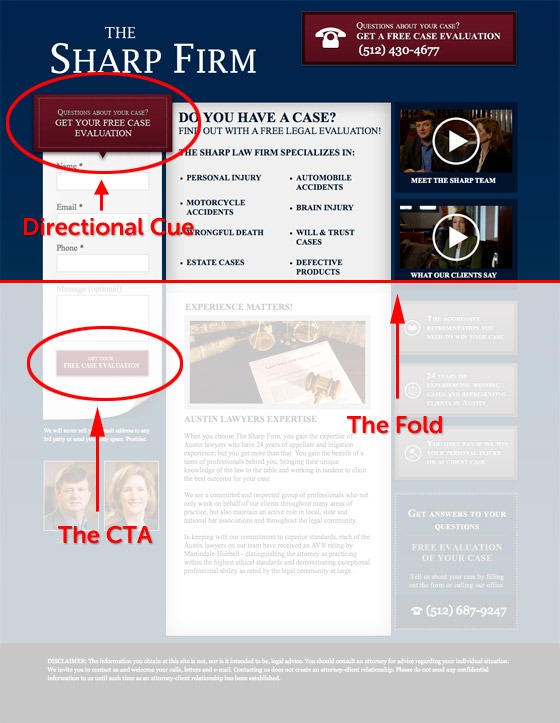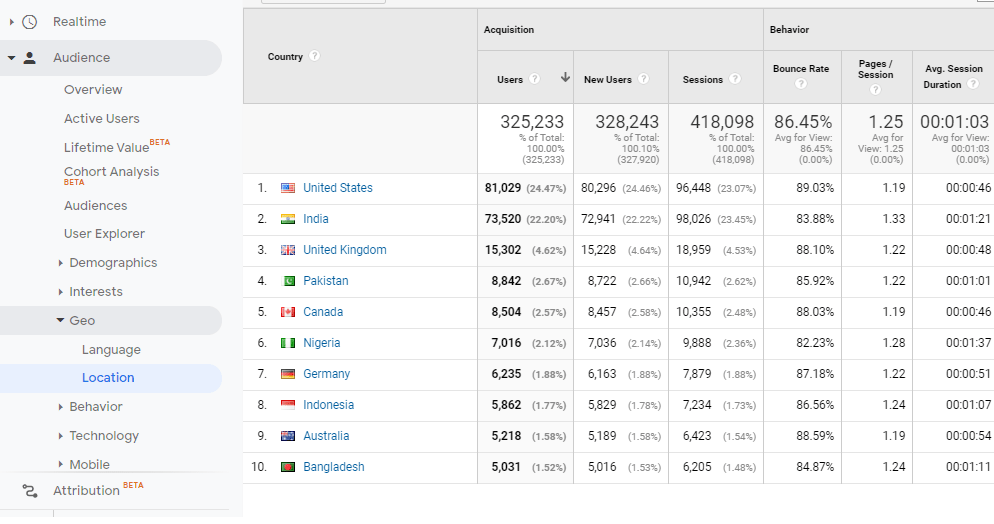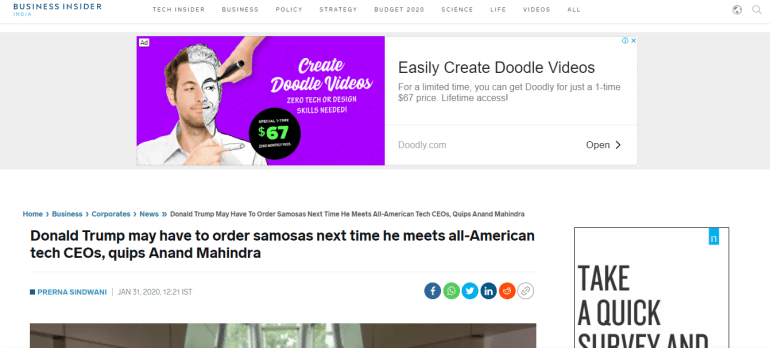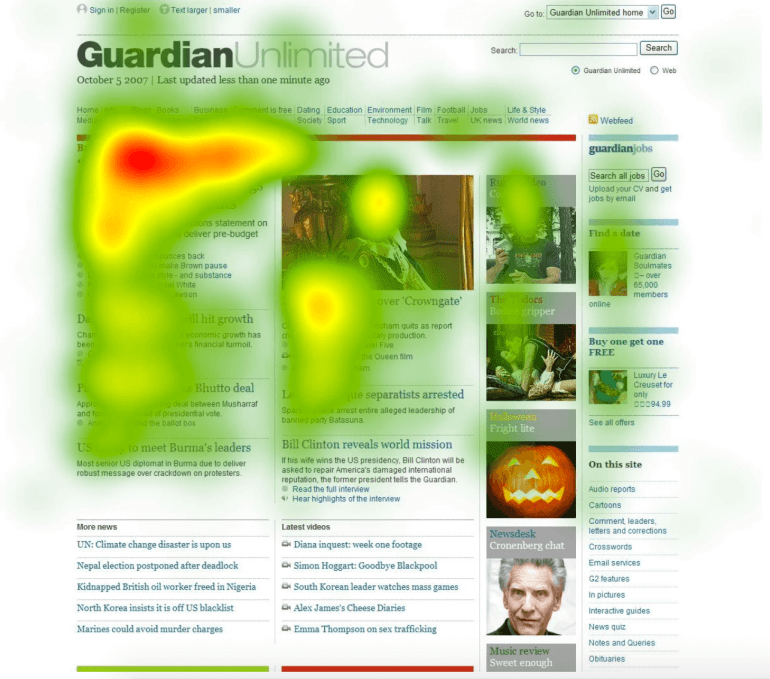If you are a publisher, you would be knowing how important it is for your monetization strategy to choose the perfect Ad Placement. Here is a guide on where to Place your Ads.
A number of factors affect revenue generation from websites, and the placement of ads is one of those factors. When it comes to creating ad placement, publishers have numerous options to choose from. This often confuses them and raises questions such as which is the best ad placement and what are the highest paying ad placements.
There is no guaranteed ad placement to skyrocket ad revenue. Finding the best ad placement is all about personalization, and publishers should run by best practices to understand industry trends.
Each website is unique, and hence monetization techniques cannot be standard for every website. To help publishers, we have created this self-help guide to find the best ad placement, type, and size for their website.
But before moving on to that, we are going to talk a little bit about what ad placement is and what its significance is.
Also Read: Creating Ad Placements: Do’s and Don’ts
What is Ad Placement, and Why Is It Important?
Ad placement is an ad unit or group of ad units used to specify areas on the publisher’s website where advertisers are allowed to place their ads. Ad placement includes the size, type, and location of ads; shared with buyers during inventory exchange.
- Google Adsense allows publishers to either define their own placement criteria or go for automatically created placements.
- Where you place an ad determines its viewability, and ad viewability is an important metric for publishers to consider.
- Advertisers go for inventories that have high viewability, and if your website ad sizes are not resulting in the same, you can lose revenue.
- Ad sizes and ad formats have an impact on how users engage with the ads, which is why it is advised to optimize them regularly.
For example, if a publisher decides to offer leaderboard size in their inventory, they should consider placing the ad above the content. This is because, according to Google, leaderboard ad sizes perform best when they are placed in this manner.
Now that some light has been shed upon ad placement let’s move on to how publishers can find the best ad placement for optimizing revenue generation.
Prerequisites of Ad Placement
Of course, you need to remember that all units are of course not built equally, and at the same time, there can be no magic formula to determine how exactly you can get your revenues to explode! Each and every website is unique, and therefore it is important to determine the best placement and serving technology for each individual website.
1. Website Area and What Makes It Important?
A Website area is a part where you would put the primary content of your website. Now, your website has basically two parts – the ATF or Above the Fold and BTF or Below the Fold.

Above the Fold
This is the part of your webpage that the user will be able to see when he opens the webpage. So these advertisements are bound to have more viewability than Below the Fold. A Google study has shown that ATF ads happen to be 73% viewable, whereas the percentage for BTF is 45% only.
Below the Fold
This is that part of the webpage that the user can see only after he has scrolled down. If you are looking forward to increasing the viewability of BTF ads, you will have to ensure that the content that you have on the web page is enticing enough to encourage the user to actually scroll down.
2. Tools Required for Best Ad Placement
Google Analytics or SEO Tool
To monitor the traffic and audience. Also, to analyze the source of traffic, most used devices, geography-wise distribution and more. The best tool to do this is Google Analytics. For you, it might turn out to be beneficial if your aim is to show the ads on specific pages or even reserve the ads, which are high-earning when it comes to direct deals.
Heatmap
With heatmaps, it’s easy to find the most engaging parts on the website—Above the Fold and Below the Fold.
Ad Manager Dashboard
To check the exact earnings via inventory and performance of each ad size and type.
3. Traffic Analysis
The first step to ad revenue optimization is to understand the audience. Start with numbers such as monthly users and page views. This picture of your website traffic will help you choose the correct size and ad format in the specific region that most of your users hail from. In the same way, you will have the option to reject ad formats which are not so suitable for certain regions.
Use Google Analytics to check which country is offering the majority of traffic. This should help to choose the ad placement popular among advertisers in that region and/or avoid ad placements not supported in that region.

Next, find the pages getting the most traffic and least bounce rate, these are the money makers, and publishers should sell these via guaranteed deals for better monetization.
4. Ad Viewability
Just because you have placed ads on your website doesn’t mean users are seeing them.
Ad viewability has become an important metric for advertisers. Digiday says 54% of ads aren’t viewable. This frustrates advertisers as half of their spending is wasted.
All this adds pressure on publishers to improve their inventory to show viewable ad units. Start by understanding ad viewability standards set by IAB and MRC.
Here’s an example of viewability standards – a minimum of 50% of the ad is in view for a minimum of one second for display ads or two seconds for video ads.
While creating ad placements, ad viewability should be one of the key focus areas. Meaning, find placements that get appropriate view time by users.
Read More: How to Improve Ad Viewability: A Quick Primer for Publishers
5. Performance of Already Placed Ad Units
Generate a report of your existing placements and their performance basis on viewable impressions, click-through rate, and overall revenue. Keep the best-performing ones and reconsider the unsatisfactory ones. Also, these numbers should serve as your baseline to compare further test results.
5 Best Strategies and Points to Consider For Ad Placement
1. Remember Who Your Users Are
Are you going ahead to place ads on your web page? Then there are a few questions you have to ask yourself –
- Will navigation of my site be easy enough for the users?
- Are all the buttons of navigation clear and self-explanatory?
- Is the content I have unobstructed?
Once you have answered yourself, you can move forward towards considering what effect your ads can have on user experience.
As an example, you may choose to put the ads in an isolated column, often called the whitespace–separated from the primary content. This will also make sure that the ads can be easily distinguished from the content. You can also do this by adding the text “Advertising” above the banner or with increased padding.
2. Start With the Revenue Model
Your revenue model influences your strategies to improve placement. For instance, if you deal with CPM, then you need to work on improving the impression number and quality.
Similarly, if you have a CPC model, your strategies should revolve around improving the click-through rate on creatives.
If you deal in both, then find which model brings the most dollar and prioritize that one. Knowing your revenue model influences the next steps you take to find the best ad placement.
Learn more: A Comprehensive Guide to Increasing Average CPM
3. Check Out Advanced Ad Formats
Banners on the sidebar are often the top-performing placements. So evidently, the most viewable position for an ad is the right side of the ATF. If you want to take it up a notch, you may also go for sticky sidebar banners. The best part is that they will be sticking to the viewport and remain visible for the entire duration of the web page visitor.
One other advanced ad format is an anchor ad. They usually stick to the viewport at the bottom and remain there for the entire duration of the visit. The difference between anchor ads and sticky sidebars is that the former are vertically aligned, and the latter is horizontal.
4. Follow What Google Says
The quality and quantity offered by Google is the reason why it is still a leader when it comes to ad tech. It has the largest pool of sellers and buyers. Hence the data and insight presented by Google shouldn’t be ignored.
In the same context, check out the ad sizes and layouts marked as most common by Google. Here are some of the common ad sizes for display ads:
- 300 x 250 – in feed between on content on the desktop webpage
- 728 x 90 – on the leaderboard with/under the logo
- 300 x 600 – sidebar sticky on the desktop webpage
Similarly, check the ad viewability standard adopted by Google. This includes data from IAB and best practices suggested by MRC mixed with Google’s own data by serving millions of impressions every minute.
Always pay attention to the size of your ads. For example, you might be leaning towards using a 970X250 billboard, the supply of which is supposed to be limited. Instead, you can go for the more popular 728X90. Our advice will be to make use of the popular ad sizes, which have a large demand for advertisers, in order to keep your fill rate from diminishing.
Learn more: Top Performing Banner Ad Sizes in 2023
3. Test the Balance Between ATF and BTF
It’s not recommended to overpopulate the above-the-fold (ATF) field for better impressions. Neither to push all your ads below the fold where they become unseen by users. When in doubt, choose testing.

This is an example of an ATF ad placed on the Business Insider webpage. These large banners bring a quality impression.
Remember that most users start scrolling as soon as the page loads. This means such ads should appear on the users’ screens as quickly as possible. Otherwise, it causes a loss of impression. Hence, make sure you have a fast-loading process for ATF ads.
Similarly, for BTF, use lazy loading to improve page load speed. These tiny details might not look like a priority, but it takes publishers a long way while strategising for better user experience, buyer satisfaction, and ad revenue.
4. Video Advertising
Looks like ad tech is not getting over video advertising anytime soon. Many stats and reports show that video advertising gets better user engagement. With the boost in technology, it is getting easier to create video ads. Hence advertisers and marketers are investing in it with each passing day.
While testing the layout, consider video advertising for your inventory. You have options like out-stream video ads that can be run using VAST and VPAID services. In case you publish video content, then you should definitely get started with video ads.
Read more: How Publishers can Transition From All-display to Video Ads
5. Testing, Testing, and Some More Testing
As mentioned above, no ad placement will bring you a guaranteed increase in ad revenue. It requires constant testing to pinpoint ad placements that should work for your website. This adds to the tasks of your ad operations team, making testing and monitoring an ongoing process.
Google Ad Manager offers an A/B testing experiment. Similarly, you can take help from third-party services to test placements for various web pages. While testing, start with the location that shows the highest engagement, as noted using the heatmap tool.

For more complex experiments, test display, native, and video ads against each other to understand which one adds more value to your inventory. To give you a rough idea,
You can analyze your website with various tools and try to find out the most engaging section of your web page. Once you have these insights, you can go for the necessary planning.
Checklist to Follow for the Ad Placement on your Website
It is always a good idea to keep abreast of Google AdSense policies. Here’s a summary of what you should know:
- Do not encourage clicks or views
- No false impressions or clicks
- Embedding of the ad code on the sites pages having “restricted content”
- Ads should not be there on blogs containing sensitive content
- There should be no ad code in the areas of the site which are hidden
- If you are using Ads.txt, make sure that you add yourself as an authorized seller.
- Try not to modify the Google AdSense Code
- Do not intend to get the users to change their preferences, download software or be redirected or exposed to popups
- Make it a point not to disclose any personal identifying data or details.
- Remember to Adhere to the Children Online Privacy Protection Act (COPPA)
- Avoid Bot Traffic
Wrapping Up
While testing ad placements, make sure to comply with the policies of your ad network, exchange, and SSPs. Also, keep ad standards for viewability and user experience in mind while conducting the tests.
In essence, a lot of thought and consideration has to go into choosing and implementing the best ad units as well as the technology driving them. Often people are under the impression that filling and stuffing their pages with ad units would yield great results. But what really happens is that the CPM becomes very poor and your revenue stream is also adversely affected.
Although the process might actually be a learning curve, you will get there if you know what your focus should be.
FAQ
Ad Placement can have a significant impact on the effectiveness of an ad campaign. For example, ads that are placed prominently and in relevant locations are more likely to be noticed and engage users. Ad Placements that are disruptive or unrelated to the content being viewed can be less effective or even annoying to users.
There are several factors to consider when selecting Ad Placements for a campaign. These include the target audience, the goals of the campaign, and the budget. It may also be helpful to consider the type of ad format and the type of content or context in which the ad will be displayed.

Shubham is a digital marketer with rich experience working in the advertisement technology industry. He has vast experience in the programmatic industry, driving business strategy and scaling functions including but not limited to growth and marketing, Operations, process optimization, and Sales.







